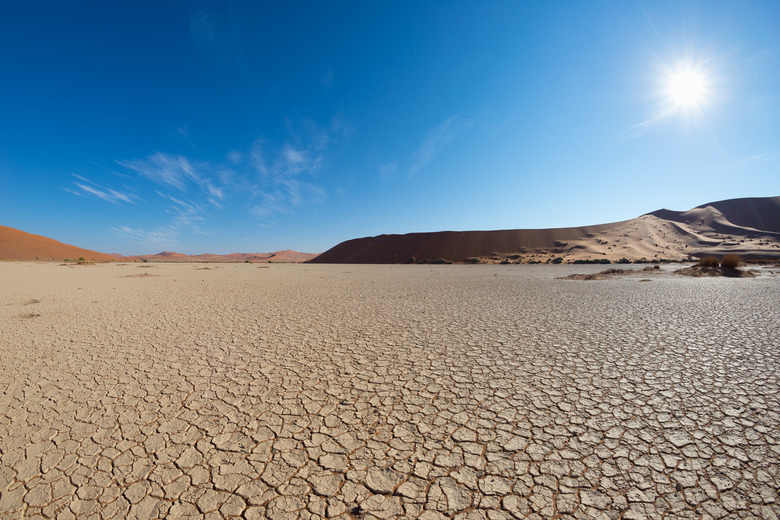Abiotic Factors Of A Desert Ecosystem
Picture a desert in your mind, and you'll probably envision a hot, dry landscape with intense sunlight. Right there, you have many of the key abiotic factors that influence the desert ecosystem. In addition, the type of soil is also an important factor; sandy deserts are common, but there are other soil types as well.
Little Rainfall
Little Rainfall
Limited water is a defining feature of desert ecosystems and their most profound environmental constraint. Typically, deserts receive less than 508 millimeters (20 in.) of rain per year. This means that animals and plants looking to survive in the desert must be able to live with little water for extended periods of time. For example, cacti have evolved to store water in their stems to help them through dry spells.
Temperature
Temperature
Deserts typically go through huge fluctuations in temperature during a 24-hour period. Because there is little moisture, deserts lack the insulating protection of both humidity and cloud cover. A desert that is hot during the day may drop to well below zero degrees at night, once the heat of the sun has left. Organisms that cannot adapt well to rapid temperature fluctuations have trouble surviving in the desert.
Soil
Soil
The type of soil in an ecosystem determines what plants can grow, which in turn defines which animals can survive. Desert soil types vary greatly, influencing a given location's drainage as well as evaporation. Water may seep deeply in sandy or gravelly substrate, but barely penetrate hard-packed clay or exposed bedrock. Depending on the substrate and the intensity of precipitation or flow, rainfall or runoff may sink quickly into desert soil or form sudden flash floods producing significant erosion.
Light
Light
Desert sunlight can be intense courtesy of prevailing cloud-free conditions and, in the subtropics, the position of the sun. Barren flats such as pebbly desert pavement or "reg" may be blindingly bright. In other desert landscapes, more convoluted terrain, such as sand dunes and mountain ranges, or more substantial plant cover, such as forests of tree-sized cacti, ensure more complex patterns of light and shadow. The degree and intensity of sunlight in a given spot helps shape its microclimate and thus profoundly affects plants and animals.
Cite This Article
MLA
Tuttle, Sarah. "Abiotic Factors Of A Desert Ecosystem" sciencing.com, https://www.sciencing.com/abiotic-factors-desert-ecosystem-8151693/. 19 April 2018.
APA
Tuttle, Sarah. (2018, April 19). Abiotic Factors Of A Desert Ecosystem. sciencing.com. Retrieved from https://www.sciencing.com/abiotic-factors-desert-ecosystem-8151693/
Chicago
Tuttle, Sarah. Abiotic Factors Of A Desert Ecosystem last modified August 30, 2022. https://www.sciencing.com/abiotic-factors-desert-ecosystem-8151693/
